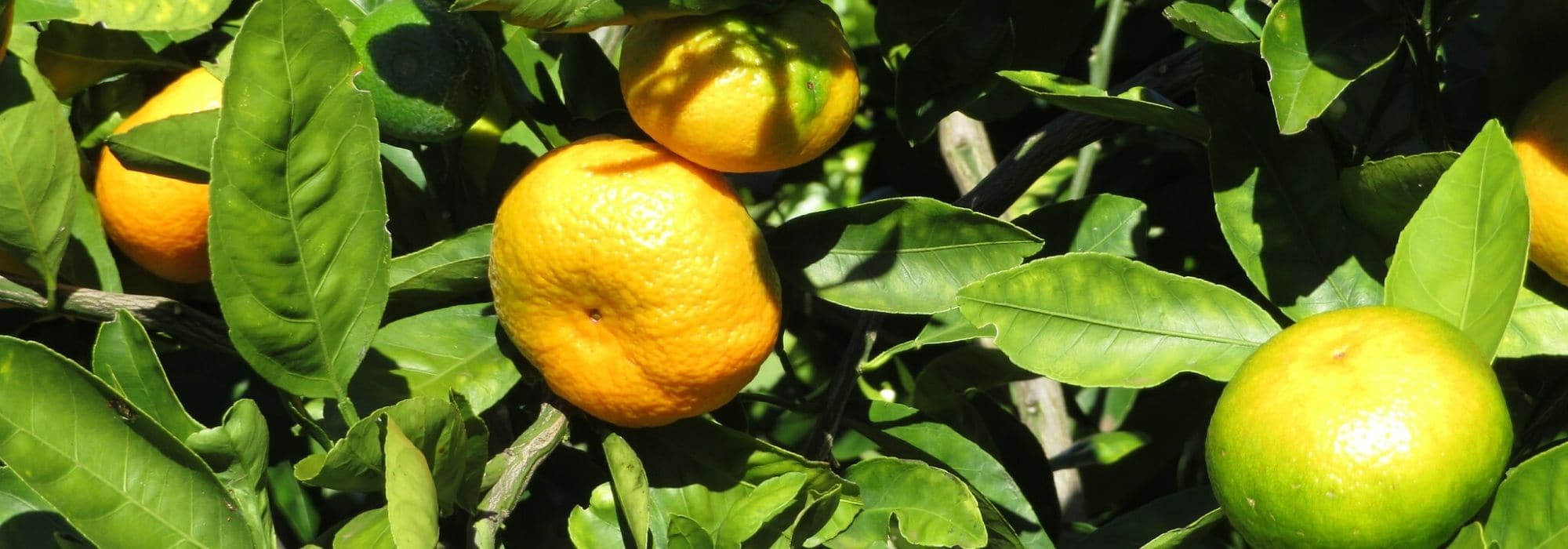
The mandarin tree: planting, caring for, and harvesting the fruits
Contents
Mandarin tree in a nutshell
- The mandarin tree is a beautiful ornamental tree with a rounded habit and glossy foliage of intense green
- It offers white flowering with an intoxicating fragrance
- It produces delicious and juicy mandarins, these citrus trees that are slightly flattened, often overlooked by consumers in favour of clementines which have fewer pips
- Hardy down to -5°C (down to -10°C for some varieties), it grows in the ground around the Mediterranean, in pots elsewhere
- It thrives in rich, well-drained soil and a sunny exposure
A word from our expert
On the stalls of greengrocers, mandarins are hardly present anymore, replaced in the hearts (and stomachs!) of the French by clementines. However, the fruits of the common mandarin tree (Citrus deliciosa) deserve a place on our tables as these citrus fruits are delicious and juicy. Admittedly, they contain a few pips, but this is a minor flaw compared to their very slightly tangy flavour.
The mandarin tree is also valued for its beauty. This small tree has many advantages for enhancing a garden: its evergreen foliage is a lovely rich green, glossy on the upper side, and its white flowers smell divine. Most mandarins, being self-fertile, bloom in spring. As for the harvest of the spherical and slightly flattened mandarins, it takes place from November to January.
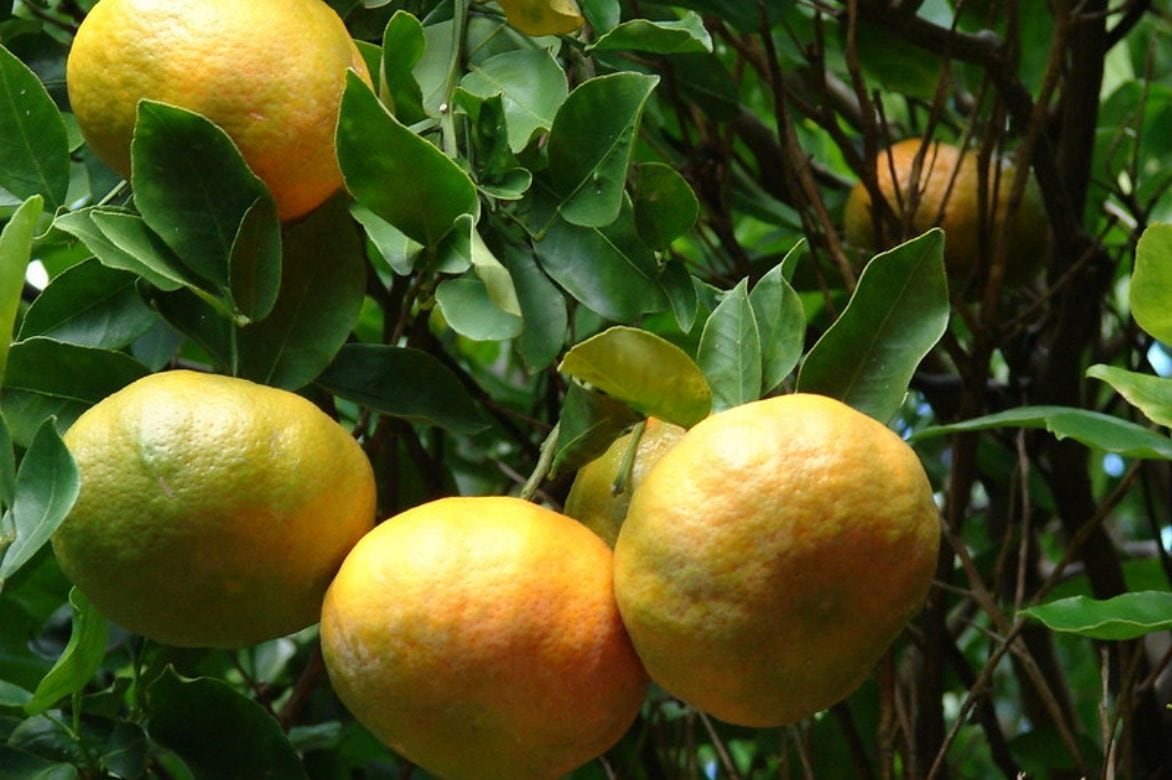
The harvest of mandarins takes place from November to January
With a naturally rounded habit, the mandarin tree can reach 4 to 5 metres at maturity, knowing that it can live up to 120 years.
Originating from China, the mandarin tree is still widely cultivated in many Mediterranean countries. In France, it can be grown in the ground, only around the Mediterranean coast and in very sheltered areas of the Atlantic coastline. Elsewhere, it thrives very well in pots, overwintered in a bright, cool location during the cold season.
Description and Botany
Botanical data
- Latin name Citrus deliciosa
- Family Rutaceae
- Common name mandarin tree
- Flowering spring
- Height 4 to 6 metres
- Exposure full sun
- Soil type Ordinary, light and well-drained soil
- Hardiness down to -5°C (down to -10°C for some varieties)
Citrus deliciosa syn. Citrus reticulata is a small tree from the Rutaceae family, which includes all citrus trees. The mandarin tree belongs to the genus Citrus, from which numerous cross-breeding and hybridization have produced oranges, lemons, grapefruits, clementines, and more. The main characteristic of this family is the presence of small oil pockets, visible beneath the leaves. In the mandarin tree, these cavities form depressions on the orange skin that contain essential oil.
Originating from Southeast Asia, particularly China, Japan, and Indochina, the mandarin has been cultivated there for thousands of years. These citrus fruits then spread throughout Asia and the Middle East, following explorations, crusades, conquests, and other trade exchanges. Finally, they reached Europe rather late, as it was Sir Abram Hune who brought this exotic fruit from Canton and introduced it to England. In 1810, some mandarin trees arrived in Malta, then in Italy and Spain. The ability of citrus fruits to hybridize and acclimatize everywhere explains the development of the Citrus genus.
Following their research, in 2020, geneticists from the INRAE unit in San Guiliano, Corsica, and the USDA established a new classification of citrus fruits. Within the Citrus genus, there are four ancestral species that are the origin of most citrus fruits: citrons (Citrus medica), pomelos (Citrus maxima), Citrus micantha, a citrus fruit native to the Philippines, and the mandarin tree (Citrus reticulata). Through cross-breeding, these base taxa have led to the creation of orange trees, pomelos, lemon trees, clementine trees, and bitter orange trees.
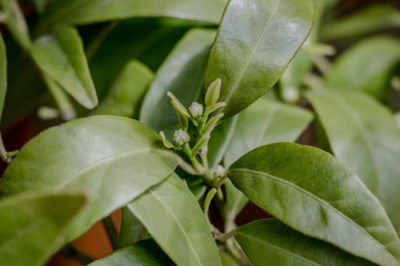
The foliage of the mandarin tree
However, doubts remain regarding its etymological origin. The word “mandarin” is derived from the Portuguese “mandarim,” which referred to high officials of the Chinese Empire, particularly literate and influential. Nevertheless, the word “mandarin” could equally reference the orange-coloured garments they wore or their passion for this fruit. Some writings even suggest that the round and flattened shape of the mandarin at the poles resembled the shape of their faces!
Numerous selections have led to the creation of several varieties of mandarin trees still widely cultivated in China, Spain, the Maghreb, Sicily, Brazil, and the United States.
The mandarin tree is a small, particularly ornamental tree with a spreading and rounded habit. It naturally forms a ball made up of fine, ramified branches, slightly bristly with thorns. In adulthood, it can reach 4 to 5 metres in all directions, and 1.5 to 2 metres in pots.
Its evergreen foliage is dense. Of a bright and intense green, the leaves are alternate and lanceolate. Measuring 4 to 8 cm long, pointed and narrow, they are glossy on the upper side, giving them a smooth appearance that makes them seem artificial. The leaves also have the particularity of being fragrant due to the presence of oil pockets, sometimes visible to the naked eye.
Flowering occurs in March-April. The mandarin tree is literally adorned with white flowers with 5 petals, about 1.5 cm long, solitary or grouped in threes, in fascicles. These flowers, which range from white to cream, emit an intoxicating fragrance.
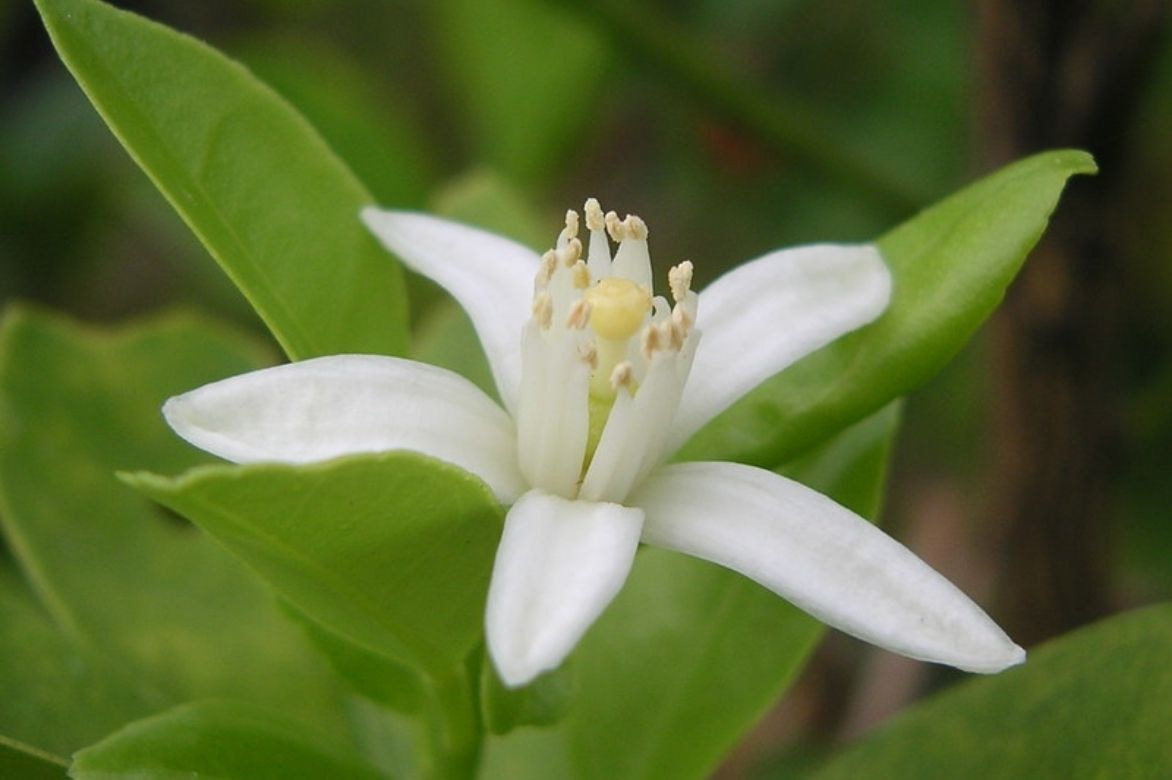
The flowers of the mandarin tree exude an intoxicating fragrance
They then give birth to pale yellow, orange, red, or carmine fruits depending on the varieties, from October to December or January. Green at the beginning of autumn, filled with chlorophyll, the mandarin gradually turns yellow and orange as the temperature difference between day and night increases. Often, the first frosts hasten the ripening of the fruits, turning them orange. Subsequently, the fruits can remain on the tree for six months and be harvested until March.
These fruits are spherical, flattened at the poles, with smooth or rough skin. Their pulp vesicles are short but very fleshy. Their flesh is rather sweet, very juicy, and slightly tangy. Measuring 5 to 8 cm in diameter, mandarins contain numerous seeds, generally oval with a rounded base and a narrow apex. The mandarin is the least acidic citrus fruit of all.
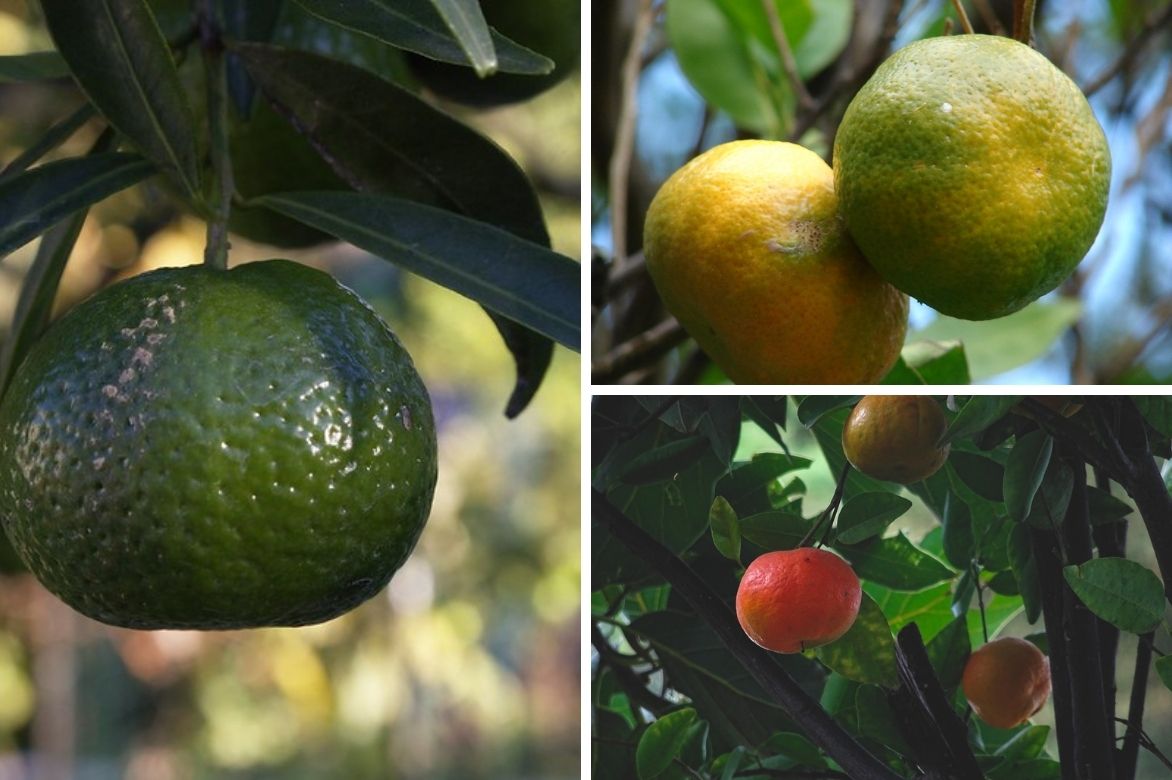
The different varieties of mandarin tree
One of the characteristics of citrus trees is their ability to easily pollinate among themselves, allowing them to produce hybrids almost naturally. The mandarin tree is no exception, and there are multiple varieties, often specifically cultivated in a region of the globe. For instance, tangerines, which are brightly coloured mandarins with thin skin, are grown in Morocco, in the Tangier region.
Citrus deliciosa is the common species that is primarily cultivated in all countries around the Mediterranean. It is the least hardy of all, as it cannot withstand temperatures below -5°C. This species derives its name deliociosa from the Italian “delicious” because its fruits are particularly tasty and sweet, although filled with pips. Among this genus, we can mention the varieties ‘Eze’, with sweet and mild fruits, ‘De Blidah’, an Algerian mandarin tree with fragrant and tangy pulp, or ‘Clémendor’.
Citrus reticulata is the mandarin tree closest to the original citrus. It is a relatively vigorous bush. There are many cultivars: ‘Changsha’ with early ripening fruits, ‘Corsica’ which is the origin of the famous Corsican clementines, ‘Kara’ with late fruits (February-March), ‘Ponka’, originating from India, and ‘Tanger murcott’ whose fruits ripen in April-May…
As for Citrus satsuma or Citrus unshiu, it is a Japanese mandarin tree, hardier than the others. It can withstand occasional frosts down to -15°C. It is a particularly vigorous bush. Its fruits are excellent, most often seedless, and are harvested from September to October. Various varieties exist: ‘Owari’, very productive, ‘Miyagawa’ with large seedless fruits, ‘Hashimoto’ with slow growth, ‘Okitsu’ with very sweet fruits…
We can also mention the Chinese mandarin tree (Citrus myrtifolia), a very ornamental tree, also known as chinotto. It offers a magnificent pearly white flowering on very dark green foliage. These leaves are quite unique in their resemblance to myrtle leaves, hence its name. Its round, orange fruits, like mandarins, are closer to bitter orange in their fragrance and flavour. Marmalade is indeed made from them. The Citrus myrtifolia is hardy down to -10°C.
Our Favourite Varieties
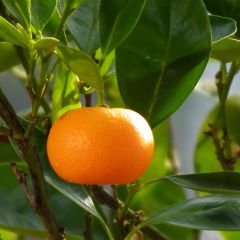
Mandarin Tree - Citrus deliciosa
- Flowering time April, May
- Height at maturity 4,50 m
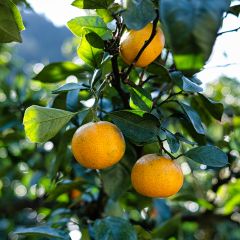
Satsuma Mandarin Tree - Citrus unshiu
- Flowering time May, June
- Height at maturity 2,50 m
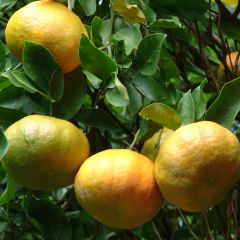
Mandarin Tree - Citrus reticulata Keraji
- Flowering time May, June
- Height at maturity 1,50 m
Discover other Mandarin trees
View all →Available in 1 sizes
Available in 3 sizes
Available in 2 sizes
Available in 2 sizes
Planting the mandarin tree
Where to Plant It?
The mandarin tree is a southern tree that requires a minimum amount of warmth to bear fruit. This is why it is only reasonable to plant it in the ground around the Mediterranean, or possibly along the Atlantic coast and in the Basque Country, provided it is well sheltered from the winds. The mandarin tree can withstand a few frosts but never for long periods. Additionally, temperatures must rise during the day.
The mandarin tree prefers light, rich, well-drained soils that are slightly acidic and non-calcareous. It absolutely detests stagnant moisture. Also, plant it in a sunny spot, as the mandarin tree needs a certain amount of light to bear fruit, and protect it from drafts, placing it against a wall or hedge.
When to Plant It?
Unlike most other trees or bushes, citrus trees should not be planted during their dormant period. Planting should therefore be done when they are in full growth. You can plant your mandarin tree in the ground or in a pot from March to the end of August, with April being the ideal month.
How to Plant It?
In the Ground:
- Moisten the root ball by capillarity by submerging it in a bucket of water
- Dig a hole 4 to 5 times larger than the root ball in depth and width
- Mix half of the extracted soil with well-decomposed compost or humus and refill part of the hole with this mixture. Feel free to add a bit of sand if the soil is too heavy, or a bit of heather soil if your soil is too calcareous
- Place the root ball without burying the collar and refill with the remaining soil
- Carefully compact the soil
- Water generously
In a Pot
For pot planting or repotting, do this towards the end of summer. You can choose a container that suits you, whether it be terracotta, glazed or not, wood, or plastic. However, a breathable material is always preferable. Avoid pots with water reservoirs. Choose a pot whose diameter is equivalent to the diameter of the tree, thus larger than the root system.
- Soak the root ball in water to moisten it
- Cover the bottom of the pot with clay balls to improve drainage.
- Fill the pot with a substrate made up of 2/3 garden soil and 1/3 special citrus compost
- Place the root ball and compact the soil
- Water generously
- Place your pot on a wheeled stand.
Your potted mandarin tree should be placed outside in the sun and sheltered from the wind from spring to autumn. As soon as temperatures drop, winter your mandarin tree.
Read also
10 dwarf fruit trees to grow in potsCare and Pruning of the Mandarin Tree
Two things to remember for properly caring for your citrus tree: it’s a greedy tree native to regions affected by monsoons. Therefore, it requires regular watering and fertilisation.
Watering
Citrus trees need regular watering, even during their dormant period. The soil should remain moist (but not waterlogged) continuously, and the potting mix should not dry out. For a citrus tree in a pot, a small daily watering is ideal. If it’s in the ground, the same applies. A drip irrigation system is perfect.
As citrus trees do not like lime, prefer using rainwater for watering.
Fertilisation
The citrus tree requires regular fertilisation as it is greedy. If your citrus tree is growing in the ground, in March and September, apply a slow-release fertiliser specially for citrus trees at the base of the tree, then mulch with grass clippings. For a citrus tree in a pot, fertilise with a liquid fertiliser specially for citrus trees every three months.
You can also add some compost at the base of the tree using a cultivator.
Pruning
Citrus trees do not actually need pruning to grow and bear fruit. However, it is still necessary to prune due to their tendency to branch out significantly. Prune after fruiting every two years. This maintenance pruning helps to aerate the branches and bring light to the centre of the tree, remove unsightly or dead branches, and facilitate harvesting. Take the opportunity to cut back any suckers.
Be sure to disinfect your cutting tools to prevent the transmission of fungal diseases. You can also apply a healing paste on the wounds left by the pruning shear.
Ingrid will tell you more in: When and how to prune a citrus tree?
Wintering the potted mandarin tree
As soon as temperatures drop, your potted mandarin tree should be wintered in a cool, frost-free, and bright location. A temperature of 8 to 10 °C is ideal. If you have an unheated orangery or conservatory, that’s perfect. Your mandarin tree can spend the winter there without any issues. You can also place it in a bright garage. However, wintering it in a flat is not advisable as it tends to be too warm and dry in winter.
If you do not have a room to winter your mandarin tree, you can protect it with 2 to 3 layers of winter fleece. Then place it in a sheltered spot in the garden, against a wall facing south-east or south-west. Make sure to secure the winter fleece to the rim of the pot as you will need to continue watering it.
Diseases and Pests of Mandarin Trees
Many diseases can affect the mandarin tree, especially if cultural conditions are not met. Therefore, ensure you practice regular watering without excess, provide sufficient light and warmth for your mandarin tree, and protect it from the cold.
Mal secco (dry rot) can affect the mandarin tree, but less frequently than the lemon tree. It is the fungus Phoma tracheiphila that causes this cryptogamic disease, which manifests as discoloration of the leaf veins and shoots, followed by leaf drop and branch dieback. The only solution is to remove and burn the affected branches.
The mandarin tree is also susceptible to gummosis, most commonly caused by a pruning wound or a pest. As a preventive measure, spraying Bordeaux mixture is recommended in winter. Grey mould (Botrytis) can also affect the mandarin tree. A spray of horsetail decoction can help prevent its occurrence.
More dangerous is tristeza. Highly contagious, this disease is caused by graft degeneration or transmission by aphids. This incurable disease leads to the death of the mandarin tree.
As for pests, there are many, but the main threats are mealybugs and aphids as they are vectors of diseases like sooty mould. The Mediterranean fruit fly also targets mandarin trees: the larvae develop inside the fruit, causing it to drop. Red spider mites, fruit miners, or lemon tree caterpillars may also appear.
→ To learn more, also check our article: “The most common diseases and parasitic pests of mandarin trees“.
The propagation of mandarin trees
The most reliable solution for propagating a mandarin tree remains grafting, but it is reserved for professionals or very experienced amateurs. However, one can attempt other, more uncertain propagation methods, such as sowing, propagation by cuttings, and layering.
Sowing
Sowing is possible, but the resulting plant will take a long time to bear fruit. Expect 3 to 10 years before tasting the first mandarins. Moreover, you will have no certainty regarding the resemblance of the plant obtained by sowing to the parent plant.
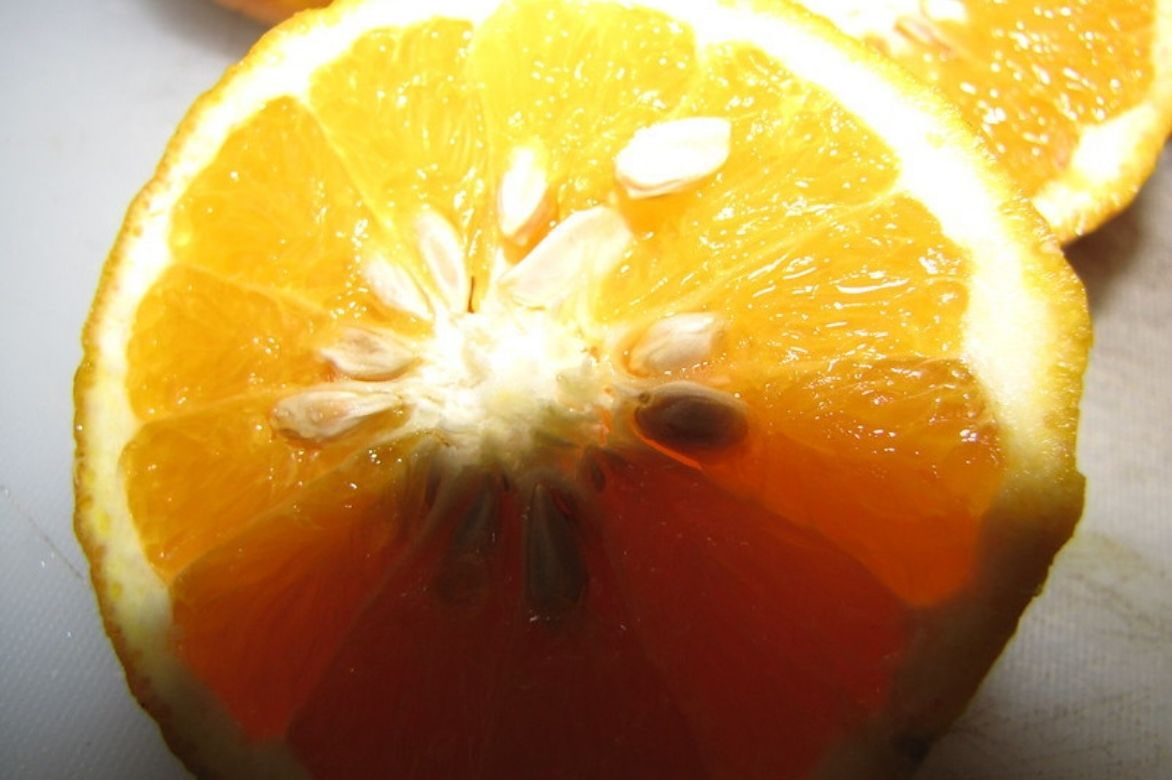 Sowing the mandarin tree is possible by collecting the seeds, but there is no guarantee of success
Sowing the mandarin tree is possible by collecting the seeds, but there is no guarantee of success
- Collect seeds from the mandarin tree and clean them well to remove the pulp. Use seeds collected within the last 24 hours
- Soak them overnight in a glass of lukewarm water. Discard any that float to the surface after 24 hours of soaking
- Fill a pot with a substrate made of potting soil and sand
- Place the seeds and cover with a thin layer of substrate
- Water by spraying and place in a warm, bright room
- Keep moist until the seeds germinate
Germination occurs after about 3 weeks. When the seedlings reach 10 cm, transplant them.
Propagation by Cuttings
Propagation by cuttings allows you to obtain plants identical to the parent plant. This method is carried out from April to September, with a preference for summer.
- At the tip of a branch, take a semi-woody shoot from the current year, about 10 cm long, by cutting just below a node
- Remove the lower leaves from the stem, leaving only 3 at the top
- Plant each cutting in a substrate made of sand and potting soil
- Gently firm the soil around each cutting and water by spraying
- Place the cuttings in a mini greenhouse, under a cut plastic bottle or a plastic bag
- Keep your cuttings warm in a bright place but out of direct sunlight
Layering
Layering is done in April or May.
- Look for a vertical branch with 2 or 3 side shoots
- Remove the lower leaves for about 20 cm
- Make an incision by circling the branch to create a ring about 1 cm wide, then remove the bark to expose the wood
- Wrap this incision in plastic filled with potting soil and turf, and keep it well-moistened to ensure the substrate remains damp
- Secure with raffia and cover with aluminium foil to keep the incision dark
- After 3 months, roots will appear. Cut the shoot below the layering and plant it
Harvesting, Storing, and Using Mandarins
Mandarins are harvested at ripeness. Indeed, but how can you tell the true ripeness of a mandarin? The colour is not an absolute indicator of ripeness. The epidermis of some mandarins is orange, while others, like Citrus satsuma, can remain yellow or even green, even though the flesh is coloured. Therefore, when the time comes, the best way to check if a fruit is ripe is to weigh it. A ripe mandarin feels heavy. Of course, you can also taste them! In any case, mandarins are harvested over a long period, as needed.
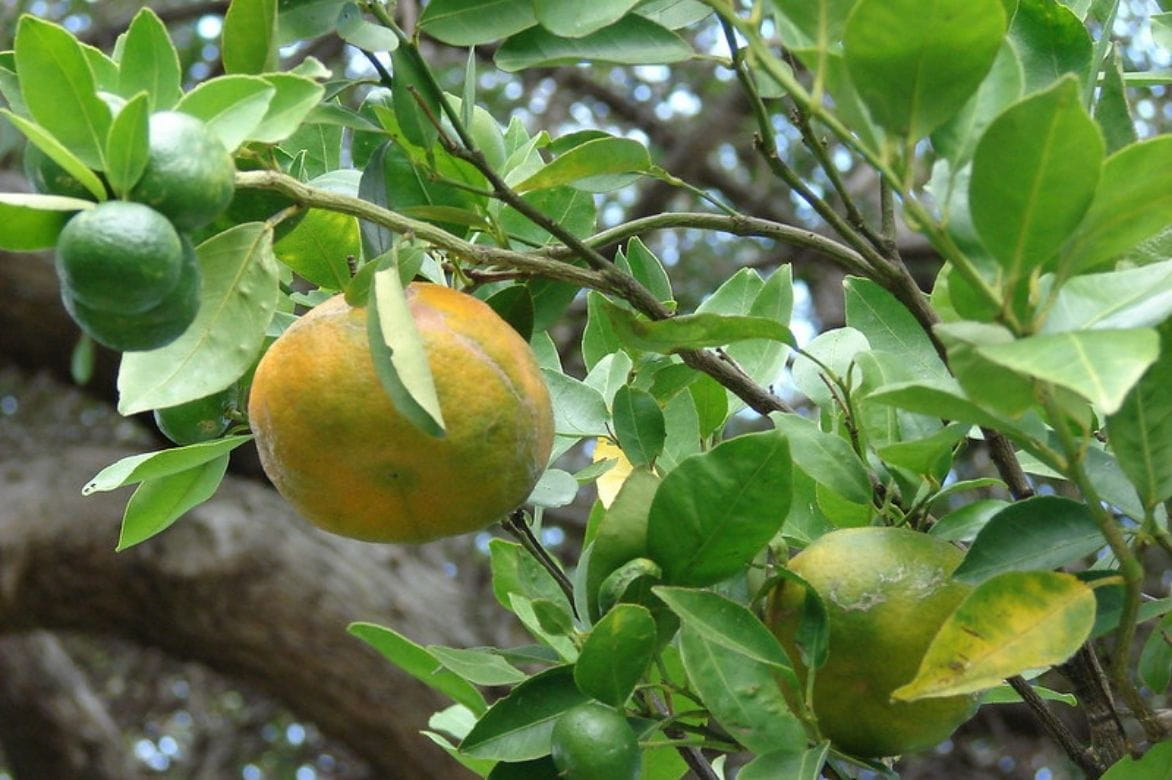
Mandarins are harvested over a long period, as needed
Mandarins should be stored in a cool, airy place, protected from frost. You can also keep them for 2 weeks in the refrigerator, in the vegetable drawer. Beyond that, they dehydrate and dry out.
Mandarins can be eaten as they are, segment by segment. They are delicious when made into marmalade, jam, or jelly, or incorporated into desserts like tarts, cakes, creams, sorbets, and fruit salads… The bark is used to flavour pastries, and it can be made into a delightful liqueur or candied. It pairs very well with chocolate.
How to associate the mandarin tree in the garden?
With its glossy foliage and white flowering, followed by orange fruits, the mandarin tree takes centre stage on your terrace. If you plant it in a glazed blue pot, its fruits will be beautifully highlighted.
Your mandarin tree can be paired with other citrus trees, such as the orange tree, bitter orange tree, or lemon tree. Together, they will provide you with their intoxicating scents and attract a myriad of pollinating insects. This does not prevent you from planting them alongside other fragrant plants like lavender, jasmine, or myrtle.
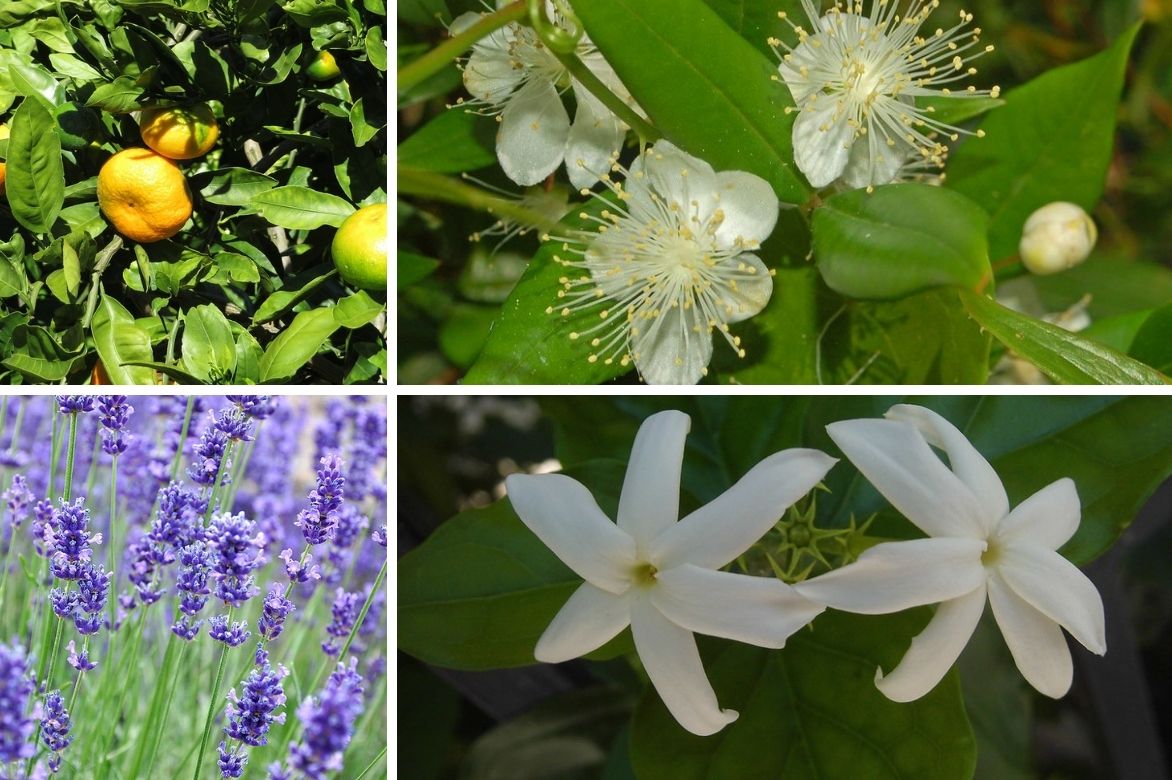
A fragrant terrace with a Citrus Satsuma, lavender, myrtle, and jasmine
Mandarin or clementine?
We are in the early 20th century near Oran in Algeria. There, Father Clément, head of the nurseries at the agricultural orphanage of Misserghin, passionately cultivates his citrus trees, prioritising sweet oranges and mandarins. This is the true part of the story; the rest oscillates between different versions. One version relates to chance, while another highlights Father Clément’s horticultural talents. Regardless, from the cross-breeding (whether natural or intentional) of a mandarin tree with a sweet orange tree, this sweet, seedless, and easy-to-peel fruit was born.
It was not until later, in 1892, that the French botanist and physician Louis-Charles Trabut discovered this tree and its fruits with a new taste to his palate. Ultimately, he named this fruit the clementine in honour of the genius (or luck!) of Father Clément.
For further reading
Alexandra tells you all about the planting and growing of citrus trees and their wintering.
If you enjoy the mandarin tree, you will certainly love the lemon tree:
- Alexandra explains how to plant and grow the lemon tree and how to recognise diseases and parasitic organisms
- Lorène shows you when and how to prune the lemon tree
- Pascale explains the differences between mandarin and clementine
Finally, to find out if you can plant a mandarin tree in the ground, Virginie presents the orange zone.
- Subscribe!
- Contents
































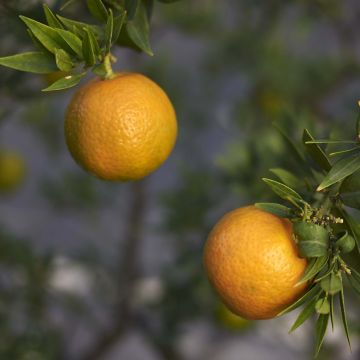

Comments